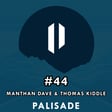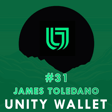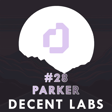
#30 - Decentralized Confidential Computing and Encryption Paradigms
Yannik is the co-founder of Arcium, a decentralised network focusing on confidential computing. Yannik's passion for technology started with building mods for video games.
What is Arcium?
Arcium is a decentralized confidential computing network built to allow secure computations over encrypted data. Unlike traditional cloud computing, Arcium does not rely on centralized servers or trusted hardware. Instead, it utilizes cryptographic techniques, specifically Secure Multi-Party Computation (MPC), to ensure that multiple parties can jointly compute functions over data without any party being able to see the actual data. This breakthrough allows for the development of private and secure applications without sacrificing transparency or decentralization.
One of the core concepts Yannik introduces is the Decentralized Confidential Computing Zone (DCZ), a network where nodes can register, trustlessly form clusters, and offer their compute resources to perform confidential operations. The technology Arcium uses leverages existing blockchains as a consensus layer, enabling confidential computations to be integrated directly into smart contracts.
How does Arcium encryption work?
At a high level, Arcium’s innovation lies in the ability to perform computations over encrypted data, ensuring data privacy throughout the process. The idea that data can be processed without being decrypted sounds almost paradoxical, but it is made possible through technologies like Fully Homomorphic Encryption (FHE) and MPC.
While Fully Homomorphic Encryption allows for computations to be done directly on encrypted data, it is slow and computationally expensive, with a performance penalty of up to 1,000 times compared to plaintext computations. In contrast, Arcium uses MPC, a more efficient alternative that divides computations into a preprocessing phase and an online phase.
MPC allows multiple participants in a computation to hold secret shares of data. These shares are manipulated locally before being combined to produce a final output. This method not only ensures confidentiality but also maintains efficiency, which is crucial for large-scale applications like DeFi and AI training.
Why Arcium Chose MPC Over FHE
Arcium’s decision to use MPC, instead of relying solely on FHE, comes down to performance and trustlessness. The inefficiencies of FHE, particularly when dealing with complex operations like multiplications, make it unsuitable for many real-world applications. FHE suffers from noise accumulation, where repeated computations degrade the accuracy of the data. This problem can be partially solved with bootstrapping, but this process introduces further delays.
In contrast, MPC allows for computations to be split between multiple participants in a way that avoids noise accumulation. By using somewhat homomorphic encryption for simpler operations like addition and relying on precomputed randomness for more complex tasks like multiplication, Arcium can achieve near-plaintext speeds without sacrificing security. This efficiency is key to making confidential computing accessible to a wider range of applications and industries.
A Privacy-First Approach for a Decentralized Future
Yannik believes that privacy will be a critical issue as blockchain technology scales into mainstream applications. He points out that while blockchains offer transparency, they often fail to protect user privacy. Everything recorded on a public ledger is visible to anyone, which may not be acceptable for enterprises or individuals who need confidentiality in their transactions.
This Podcast is fuelled by Crypto trading bot platform Aesir. Sign up and use code AESIRPOT20 at checkout for 20% OFF your subscription.



















